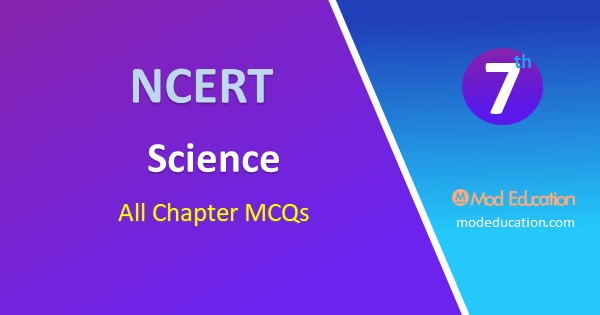MCQ Questions for Class 7 Science Chapter 15 : NCERT solutions for Class 7 Science MCQs Chapter 15 “Light” with Answers PDF Free Download prepared here according to the latest CBSE syllabus and NCERT curriculum. Class 7 Science MCQs Multiple Choice Questions for all Chapter.

MCQ Questions for Class 7 Science Chapter 15 Light with answer pdf
Q1. Which one of the following shows lateral inversion?
(a) Plane mirror
(b) Concave mirror
(c) Convex mirror
(d) Convex lens
Answer: (a) Plane mirror
Q2. In a concave mirror the reflecting surface is
(a) Plane surface
(b) Bulging out surface
(c) Uneven surface
(d) Bent-in surface
Answer: (d) Bent-in surface
Q3. The path of the light is
(a) always a straight line
(b) a curved line
(c) a zig-zag line
(d) depends on the medium
Answer: (a) always a straight line
Q4. Light travels in:
(a) curved line
(b) straight line
(c) linear line
(d) can’t say
Answer: (a) curved line
Q5. The path of the light is
(a) always a straight line
(b) a curved line
(c) a zig-zag line
(d) depends on the medium
Answer: (a) always a straight line
Q6. When light bounces off a surface, the surface is
(a) Transparent
(b) Reflector
(c) Opaque
(d) Translucent
Answer: (b) Reflector
Q7. Which one shows lateral inversion?
(a) Plane mirror
(b) Convex mirror
(c) Concave mirror
(d) All of these
Answer: (a) Plane mirror
Q8. is the change of direction of light that is falling on a mirror.
(a) direction
(b) conversion
(c) reflection
(d) none of these
Answer: (a) direction
Q9. White light is composed of
(a) three colours
(b) seven colours
(c) five colours
(d) eight colours
Answer: (b) seven colours
Q10. Which of the following can form real images?
(a) A plane mirror
(b) A convex mirror
(c) A convex lens
(d) A concave lens
Answer: (c) A convex lens
Q11. Image formed by a plane mirror is
(a) virtual and erect
(b) real and erect
(c) virtual and inverted
(d) real and inverted
Answer: (a) virtual and erect
Q12. The image formed by plane mirror is:
(a) erect
(b) virtual
(c) concave
(d) convex
Answer: (a) erect
Q13. A virtual image
(a) can be formed on the screen
(b) cannot be formed on the screen
(c) is formed only by the plane mirror
(d) is formed only by the convex mirror
Answer: (b) cannot be formed on the screen
Q14. Light is a form of
(a) Energy
(b) Power
(c) Heat
(d) Temperature
Answer: (a) Energy
Q15. Boojho and Paheli were given one mirror each by their teacher. Boojho found his image to be erect and of the same size whereas Paheli found her image erect and smaller in size. This means that the mirrors of Boojho and Paheli are, respectively
(a) plane mirror and concave mirror
(b) concave mirror and convex mirror
(c) plane mirror and convex mirror
(d) convex mirror and plane mirror
Answer: (c) plane mirror and convex mirror
Q16. An image formed by a mirror or lens which is upright is:
(a) virtual
(b) concave
(c) erect
(d) convex
Answer: (a) virtual
Q17. The coloured band of light obtained by dispersion of light is called
(a) image
(b) spectrum
(c) convergence
(d) scattering
Answer: (b) spectrum
Q18. Light is
(a) an electromagnetic radiation
(b) a transverse wave
(c) mass less
(d) All of the above
Answer: (d) All of the above
Q19. Which of the following can be used to form a real image?
(a) Concave mirror only
(b) Plane mirror only
(c) Convex mirror only
(d) Both concave and convex mirrors
Answer: (a) Concave mirror only
Q20. If reflecting surface is convex, then it is a:
(a) concave mirror
(b) erect
(c) virtual
(d) convex mirror
Answer: (a) concave mirror
